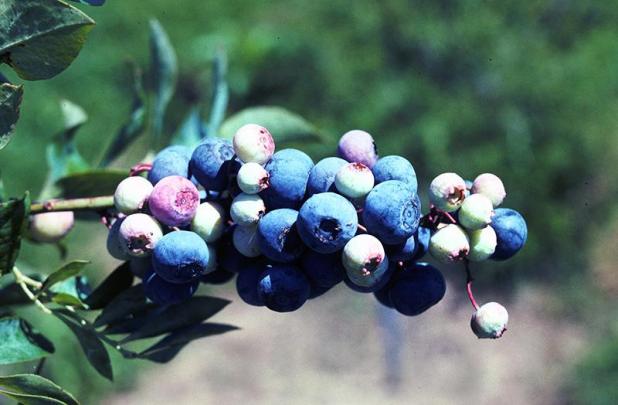
—LSU AgCenter/Allen Owings Photo
Get it Growing: It is blueberry time
Louisianans are fortunate to live in a state that supports blueberry growth. Blueberries are easy to grow and one of the most nutritionally dense foods on Earth. They are a significant source of vitamins and secondary metabolites that are widely studied for health benefits.
Blueberries are one of the richest sources of ascorbic acid and is an excellent source of antioxidants. Blueberries contain natural compounds called anthocyanins, procyanidins, chlorogenic acid and flavonoid compounds. Anthocyanin is the main antioxidant found in blueberries.
Antioxidants provide cancer-fighting power, help with cataracts and macular degeneration, have anti-diabetic properties and have been shown to decrease both blood pressure and cholesterol, thereby reducing the incidence of atherosclerosis and cardiovascular disease risk.
Hippocrates, the ancient Greek physician and “Father of Medicine” said, “Let food be thy medicine and medicine be thy food.”
Find local growers in Louisiana at the website www.pickyourown.org/LA.htm. And consider growing your own at home.
Rabbiteye blueberry is a deciduous shrub native to the southeastern United States. It has been named a Louisiana Super Plant because of its reliability as an excellent performer in gardens and landscapes, and it also does great in containers.
Fruit ripens over a 4- to 6-week period so harvest can occur for several weeks. Well-maintained, mature rabbiteye blueberry bushes can be expected to yield more than 10 pounds per bush, and sometimes up to 30 pounds per bush.
Rabbiteye blueberries grow in USDA hardiness zones 8 to 10 and require acidic soils with a pH of 4.2 to 5.5. For the best fruit, a minimum of six to eight hours of full sun are required, and bushes will have the best production in full sun all day. The shrubs grow 8 feet tall and 6 feet wide and should be planted while they are dormant during fall or winter with a 4-to-6-foot spacing between plants.
Rabbiteye blueberries produce best through cross pollination, and at least two to three varieties should be planted together to provide adequate pollination.
Ensure proper moisture, especially during drought periods or in sandy soils. Apply 3 to 4 inches of mulch around bushes. Fertilizer should be divided into multiple applications each year and applied at low rates.
Heavy pruning is not necessary; however, some pruning may be desirable to keep the fruit within easy reach and to encourage new growth.
Choose a variety that has a chilling requirement compatible with your location. The southernmost areas of Louisiana may not get enough chill hours for consistent fruit production in all varieties. Traditional varieties like Premier, Climax, Brightwell, Tifblue and Powderblue remain well-suited to most areas of Louisiana.
